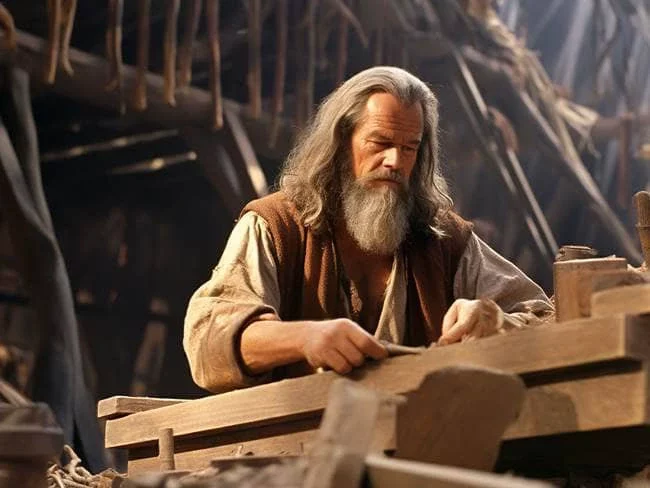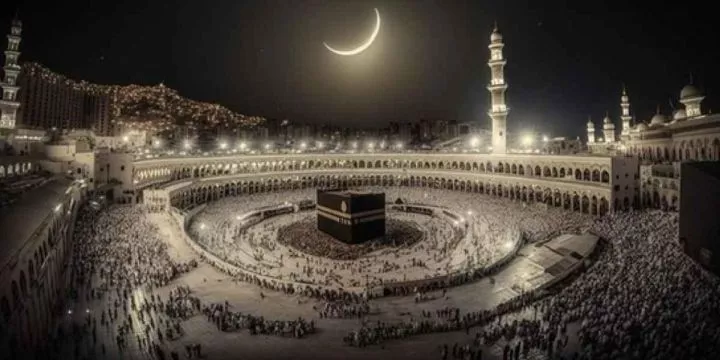
Pursuing the spiritual life is beautiful and complex. It is beautiful because of the truth it illuminates (and beauty and truth are interchangeable at the level of the transcendental). However, it is also complex because of the many layers and difficulties involved.
In the following essay, I will discuss some of the struggles innate in living a spiritual life. To do so, I will follow Saint Francis's observations by incorporating Jacob's ladder as the metaphor and point of departure.
Jacob's Ladder
The story of Jacob's ladder appears in the Book of Genesis. While on the run from a jealous and wrathful brother, Jacob dreams of an enormous and magnificent ladder (or stairs) that stretches from the earth to heaven. Jacob describes angels climbing and descending the ladder. (See Genesis 28:11-19).
As is frequently the case, there are several ways of interpreting the biblical text. The most common interpretation - and the one the text most easily suggests - involves seeing the story as God affirming the promise of His unbroken covenant made to Abraham and his descendants.
Saint John offers another interpretation. He suggests that the ladder is a foretelling of the Incarnation, for Jesus was himself the connection between divine and human and, therefore, served as our "ladder" to heaven.
Finally, Jacob's ladder can also be understood as a metaphor for the spiritual life.
What Is The Spiritual Life?
What does it mean to be spiritual, and what is the spiritual life?
It is beneficial to contrast the term spiritual with the material in order to understand it. The Bible, Catholicism, and most philosophy (specifically, ontology) assert that human beings are composed of a material body and a non-material soul or spirit.
The spiritual soul is life; it is the principle that makes something alive. Actuality is contrasted with potency. One way to explain this concept is to state that a human body is a human being potentially. It is the soul that makes a human being what it is. The soul is the essence of a particular being.
Catholicism generally defines the spiritual life as participation in God's life, often called the life of God in us. It is called the spiritual life because its animating principle is the Spirit of God. Said differently, the spiritual life is a share in the divine life given to us by the Holy Spirit, who dwells in us because of the merits of Jesus Christ.
The life of God dwells in the souls of the faithful and enables them to praise and love God and serve him in virtue. As such, the spiritual life is mainly lived out in the spiritual faculties of intellect and will, although it affects the whole person, body, and soul.
To avoid the danger of pantheism, it is essential to distinguish the spiritual life from the life of God. At best, human beings can participate in the divine life; nothing, including human beings, can ever be identical to the divine life.
What does the spiritual life look like in practice? Owing to the duality of human beings, we are capable of emphasizing one aspect over another. Because of the secular culture most of us live in, the emphasis is on the material and sensual. The secular individual prioritizes things like money, sex, and power. In contrast, the spiritual life seeks God. As such, priority is placed on faith, hope, and charity.
It is essential to realize that Catholicism is not puritanical. It simply stresses that God should be our first priority, with matters of the body following. Christ's words encapsulate this concept. "Therefore, I tell you, do not worry about your life, what you will eat or drink; or about your body, what you will wear. Is not life more than food, and the body more than clothes? ... Seek first his kingdom and his righteousness, and all these things will be given to you as well." (See Matthew 6:25-34).
Finally, the spiritual life recognizes that God is present in all creatures. This divine presence is manifested in three ways: first, by God's power over all creation; second, by His omniscience, for "all things are naked and open to His eyes" (See Hebrews 4:13); and third, by virtue of being the cause and sustainer of creation.
Jacob's Ladder As Metaphor
Saint Francis de Sales uses Jacob's ladder as a metaphor for the spiritual life. In his book "The Devout Life," de Sales describes Jacob's dream in some detail before developing his metaphor.
Francis de Sales observes that, though the angels traversing the ladder have wings, they do not fly. Rather, they ascend and descend using the steps on the ladder. De Sales notes that progress in the spiritual life is also incremental, with advancement occurring one step at a time. Like the sunrise, the soul moves from the darkness of sin to the light of sanctification, not suddenly but by degrees.
It may be disheartening to realize that the purification of the soul is an arduous and lengthy process. Nevertheless, Francis de Sales suggests that our victory lies not in being perfect but in diligently struggling against our sins.
Nevertheless, recognizing our faults and sins is not to be confused with accepting them. Rather, we should see these struggles as our personal cross. Moreover, these battles with sin can instill in us the humility necessary to turn to God. Francis de Sales points out that the devout life is a life-long battle that ends only with death.
Conclusion
Owing to its richness and complexity, it is not uncommon for Scripture to be interpreted metaphorically. In his book "The Devout Life," Saint Francis de Sales does just that, using the story of Jacob's Ladder as a metaphor for the slow and challenging climb that all who engage in the spiritual life must endure.
















Comments